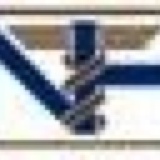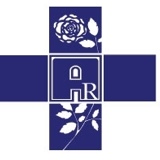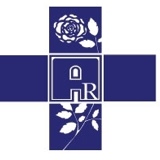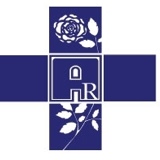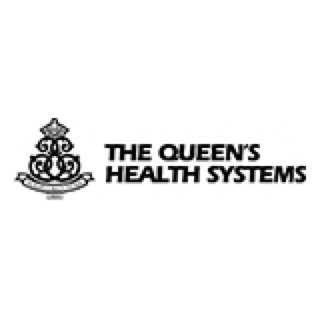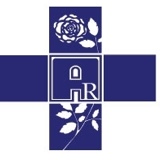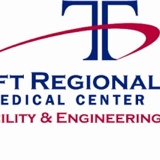Information
-
Document No.
-
Audit Title
-
Client / Site
-
Conducted on
-
Prepared by
-
Location
-
Personnel
Corridors
-
Egress routes are clear. There is no corridor clutter. Any items stored in hall are on one side.
-
Carts or other wheeled equipment in corridor are in use.
-
Area is clean and there is no visible dust, including vents.
-
Bill of Rights is present and current.
Life Safety
-
Sprinklers are free of dust.
-
All electrical panels and medical gas panels are free from obstructions.<br>
-
All electrical closets are locked.
-
Fire doors are not propped open, no visible wedge or door prop is evident.
-
All fire equipment including extinguishers, pull stations, and fire hoses are free from obstruction.
-
Fire extinguishers have been inspected within the month.
-
Power strips and cords are mounted on wall or side of desk at least 12 inches above floor.
Glucometers
-
Glucometer is clean, no evidence of blood.
-
Controls are labeled with open and expiration dates, and are not expired.
-
Strips are labeled with open and expiration dates, and are not expired.
Crash Cart
-
Emergency equipment logs are complete.
-
Only current month's log is kept on cart. 12 months supply should be available to surveyors upon request.
-
Crash cart and emergency equipment are locked with all lock numbers documented on emergency cart checklist.
-
Defibrillator pads are unopened and not expired.
Warmers
-
Blanket warmer is set with a range of 109.4 to 130 degrees F. No IV fluids are being warmed in the blanket warmer.
-
Fluid warmer is set with a range of 96.8 to 104 degrees F. All IV fluids in the warmer are dated and timed not to exceed 14 days.
-
Contrast warmer is set with a range of 86-89 degrees F. Contrast is labeled with a 30 day expiration date once placed in the warmer.
-
A calibrated internal thermometer is present in the warming device, even if there is a mounted thermometer.
-
Minimum, maximum, and actual temperatures are recorded daily. Minimum and maximum temperatures are recorded for any days that unit is closed.
-
Any temperature recorded out of range is recorded on the log with a second validating temperature taken within 30 minutes. "Action taken" needs to filled out accordingly. Clinical Engineering should be contacted if temp remains out of range with second check.
Clean Utility
-
Linens are covered.
-
All carts/shelving/storage have a solid bottom.
-
Area under sink is clear of any items.
-
All patient care supplies are placed on palette or shelving, not directly on floor.
-
Fluids are stored on the bottom shelf.
-
Sprinklers are unobstructed, allowing 18 inches of clearance below the sprinkler head.
-
No dirty supplies are stored in the clean utility room.
-
Shipping boxes are not present.
-
Sample of supplies are not expired.
Oxygen
-
Oxygen tanks are stored in an appropriate handle with no more than 12 E cylinders in a rooms, or 1 H and 2 E cylinders.
-
Full and partial cylinders are stored per protocol.
-
Oxygen storage areas are labeled with precautionary signs indication oxidizing gas storage.
-
All oxygen tanks outside of the normal storage area are secured correctly. Tanks should never be stored flat and they should be in a designated holder.
-
Per policy, expiration tag (small white sticker on gas tank) is present and checked prior to use.
Nutrition Room
-
If not Honeywelled, temperature logs are completed daily. Action is documented if out of range.
-
All hospital issued food and open juice in the refrigerator are labeled and dated.
-
Refrigerated food brought in by patient family is labeled with patient name, room number, and date. It expires in 48 hours, unless it is in an unexpired sealed manufacturer's container.
-
Refrigerator is clean and in working order.
-
No stored food items are expired (Ensure, formula, etc.)
-
Area under sink is clear from any items.
Dirty Utility
-
No clean items are stored in the dirty utility.
-
No food or drink is stored in the dirty utility.
Medication Room
-
Medications are not expired.
-
Medications are in correct patient drawers.
-
Supplies are not expired.
-
Insulin is stored according to policy.
-
Multidose vials are initialed and labeled to expire in 28 days, unless the manufacturer expiration date is sooner. This is indicated, if it is the case.
-
Multidose vials and bottles are not brought into patient rooms. The syringe or cup is prepared in the med room, and a supplied bar code is placed on the cup or syringe.
-
Pill cutters are without residue.
-
Silent Knights are clean.
-
Sharps container is not overflowing.
-
Nothing is stored under the sink.
-
Needles are kept secured unless storage area is monitored by licensed personnel, or area has high traffic.
-
Those who have access to the medication room have received training on medication security.
-
Patient own medications are stored per protocol.<br>Meds not for administration will be stored in the controlled substance room in pharmacy.<br>Meds for administration will be examined by the pharmacist, bar coded and placed in the unit pyxis. If the unit does not have a pyxis, meds will be stored in an appropriate secured location.
-
Medication rooms and medications are secured, anesthesia and medication carts auto lock.
-
Medication fridge is Honeywelled, or temps are monitored and logged, as required. Action is documented if out of range.
-
The medication fridge is clean.
-
Staff can speak to how they dispose of hazardous pharmaceutical waste.
Clean Patient Room
-
Room is clean.
-
Room is free of dust.
-
Nothing remains from prior patient.
-
Sharps container is not overflowing.
Eye wash Station
-
Water is tepid.
-
Only one step is required to operate the eye wash station.
-
Eye wash is not blocked.
-
Eye was log is complete.
-
Eye wash log has only one month's checks present.
-
Miscellaneous
EVC
-
Carts are not left unattended.
-
No food or drink is present in the cart.
-
Secondary containers have been labeled with the name of the cleaning solution that they are holding.
-
Bucket with wipes is closed.
-
Hand hygiene practices are followed.
-
Staff is able to verbalize the use of appropriate cleaning solutions.
-
EVC staff is able to speak to contact time.
-
Staff can speak to their cleaning process.
-
Staff can speak to mop bucket and mop head procedures.
-
Staff can verbalize what to do in the event of an eye splash.
-
Staff can verbalize how to find information on chemicals (SDS sheets).
Infection Control
-
Staff can speak to the process for cleaning/disinfecting equipment between patients.
-
Clean, sterile, and dirty items are not stored together.
-
Staff can speak to how clean items and equipment are stored versus dirty items and equipment.
-
Isolation precautions are followed and PPE is available for isolation rooms.
-
Isolation signage is present, as appropriate.
-
Parents and visitors adhere to isolation precautions.
-
3 observations of hand washing demonstrate compliance. Nurses with C. Diff patients use soap and water.
-
Cotton balls and gauze pads are packaged, rather than open, in glucometers and supply carts.
-
Cleaning wipe containers are closed.
-
Staff can speak to contact time for cleaning products used on unit.
-
Biohazard labels are present on items that contain bio-hazardous material, including specimen refrigerators.
-
Biohazard bags are not used to store clean supplies.
-
Tape residue is not present.
-
Furniture/walls/ceiling tiles are in good repair.
Staff Interviews/Observations
-
RN administers medication per policy. <br><br>5 rights (patient, medications, time, dose, route), 2 patient identifiers, and allergies are all verified and reviewed in addition to the bar coding process.<br>Orders are reviewed.<br>Medication retrieved from med room is kept in its original packaging. <br>Med expiration date is checked.<br>Multidose medications are prepared in the med room, and syringe or cup are labeled with bar code.<br>Meds are brought to the patient room.<br>Patient identity is confirmed using patient's first and last name and date of birth or medical record number,<br>The wrist band and med are scanned. This is done to supplement the original check, not to replace it.<br>The nurse checks the eMAR for allergies/warnings/alerts once the patient and med have been scanned.<br>Medication is given, if appropriate.
-
Breast milk is stored, retrieved, and administered using the 5 rights and 2 patient identifiers.
-
Staff can speak to PI and QI projects on unit.
-
Staff member can access SDS sheets.
-
Staff can speak to the process for broken equipment.
-
Alarm response time is acceptable.
-
Patient information is secured; computer screens are exited, report sheets are not visible.
-
A staff member can access emergency and disaster references.
-
Staff can demonstrate the process for checking the current license of the ordering provider.
-
Staff can speak to the safety process for patients with same or similar names.
-
For relevant units (L&D, Postpartum, NICU, peds), staff can speak to infant abduction drills and processes.
Miscellaneous
-
Preventative maintenance tags are present and not expired on equipment.
-
Staff are able to describe and show proof of lead apron inspection process.
-
Miscellaneous
-
Miscellaneous
-
Miscellaneous
-
Miscellaneous
-
Miscellaneous
-
Miscellaneous






